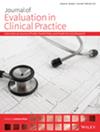A Scale Development Study: Ethical Sensitivity Towards Artificial Intelligence and Robot Nurses
Abstract
Background
Socially assistive robots use social interactions to monitor, coach, provide companionship, and support health-promoting activities. However, the widespread use of artificial intelligence and robot nurse applications in many areas leads to ethical dilemmas and concerns.
Methods
A methodological study was conducted in two phases: (1) development of the scale through a literature review and interviews related to Ethical Sensitivity towards Artificial Intelligence and Robot Nurses; (2) confirming construct validity, criterion-related validity and reliability of the developed scale. The data were collected from 356 nursing students studying at the Nursing Department of a university in Turkey between November 2022 and December 2022.
Results
The scale consists of 17 items and four sub-dimensions, which accounts for 55.84% of the total variance. The Cronbach's alpha value of the scale was 0.83, which was considered as significant. The Kaiser-Meyer-Olkin value of the Ethical Sensitivity Scale for Artificial Intelligence and Robot Nurses was 0.76, and its Bartlett's Test of Sphericity results were as follows: χ2 = 1174.25, p = 0.000. According to the results of the Confirmatory Factor Analysis, fit indices were determined as follows: χ2/SD = 1.979, Root Mean Square Error of Approximation = 0.074, Comparative Fit Index = 0.894, Incremental Fit Index = 0.897 and Goodness of Fit Index = 0.880.
Conclusion
The Ethical Sensitivity Scale for Artificial Intelligence and Robot Nurses was determined as a valid and reliable measurement tool. It is recommended that the Ethical Sensitivity Scale for Artificial Intelligence and Robot Nurses should be used in different sample groups, different cultures and societies.

 求助内容:
求助内容: 应助结果提醒方式:
应助结果提醒方式:


